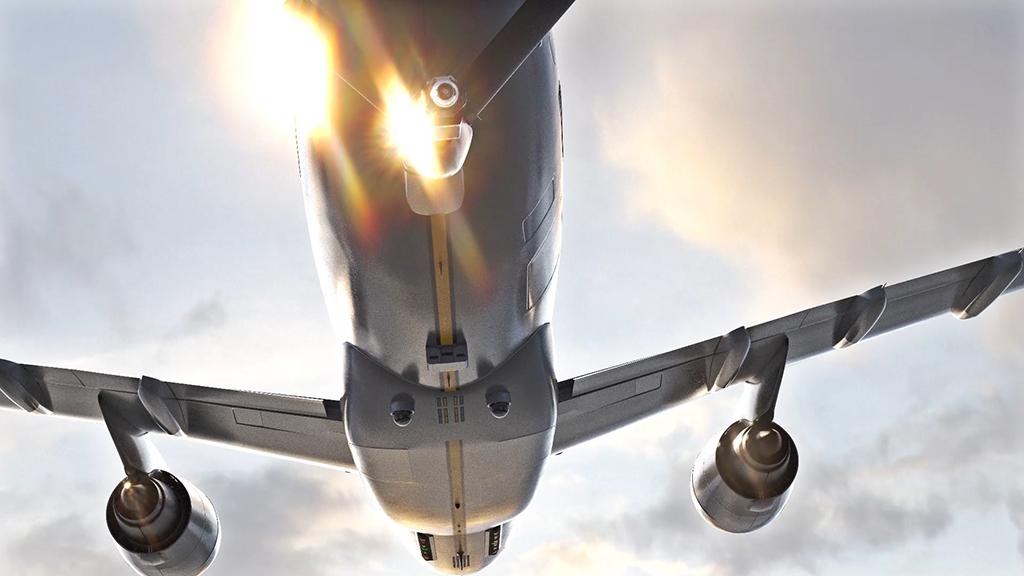
The U.S. Air Force released a request for information in July for an off-the-shelf tanker to bridge the gap between the last Boeing KC-46—to be delivered in 2029—and a future KC-Z development. Since there are only two primes building aircraft in this class, the big question is whether Airbus will reenter the fray with its KC-30 Multi-Role Tanker Transport (MRTT). If it does, it would likely team with Lockheed Martin, since the two companies agreed in December 2018 to pursue this opportunity for 140-160 tankers together.
In fact, 2018 was not the first time Airbus and Lockheed Martin considered a joint tanker bid. In 1997, they discussed a broader cooperative agreement covering military aircraft. James “Micky” Blackwell, then-president of Lockheed Martin Aeronautical, told Aviation Week: “Let’s see if there is an opportunity for Lockheed Martin and Europe to team and take a commercial aircraft and compete for the KC-X” (AW&ST May 5, 1997, p. 20).
Looking back at Airbus’ cooperation on a KC-X bid with Northrop Grumman, and at the earlier Airbus discussions with Lockheed Martin, there are three reasons to question whether an Airbus-U.S. defense prime teaming arrangement would be a winning formula.
First, tankers are not merely a commodity, but they are much closer to a commodity then they are, say, to a fighter jet or a systems network. U.S. defense primes mostly prioritize opportunities for which they can bid a technologically distinguished product, not a relatively straightforward platform that can be subject to a “price-shootout” selection process. The KC-X competition, largely for political reasons, became exactly that, and Boeing, with the lighter, less expensive aircraft, won. The Air Force’s bridge tanker competition emphasizes off-the-shelf components, indicating it will be a cost-driven process.
The 1997 discussions between Lockheed Martin and Airbus actually centered on special-mission aircraft—combining Lockheed Martin mission systems and integration with Airbus jetliners to create a maritime patrol or airborne early warning aircraft. Relatively simpler tankers and transports were not the sole focus. If they had been, it would have held less appeal for Lockheed Martin (the two sides ultimately did not partner anyway). Boeing, of course, made an aggressive bid when the KC-X competition finally happened, resulting in its $5 billion loss (so far) on the KC-46.
Second, because of the cost-sensitive nature of the tanker contract, the question of added overhead looms. Establishing the necessary industrial facilities in the U.S., along with certification and other nonrecurring expenses, are all costs that would be added into the Airbus/Lockheed Martin bid. Boeing has no such expenses. Nor would Airbus, if it were bidding on its own. But Lockheed Martin’s contribution to the team would add costs—and Lockheed would expect a profit, of course.
Third, there is a big difference in priorities between Airbus and Lockheed Martin. Airbus has been and will be aggressive about bidding its tanker in the U.S., in part because, win or lose, this process makes Boeing bleed. Without competition, Boeing would likely have not have lost $5 billion or more on the KC-46. Since Airbus is locked in a fierce commercial contest with Boeing, this loss of profitability impairs Boeing’s jetliner competitiveness around the world.Lockheed Martin, however, is far less of a direct competitor to Boeing and has no interest in the cost-sensitive commercial market.
So it is hard to understand why Lockheed would want to pursue the tanker contract. One possibility is that it views the real prize as the KC-Z. The Air Force may want a stealthy tanker that can survive in a contested air environment. Lockheed Martin would be very well positioned to go after that business.
But then again, there is absolutely no sign that the Air Force is willing to pay for the development of a stealthy KC-Z. And if the KC-Z really is a stealthy tanker and not an adaptation of a jetliner, why would Lockheed need Airbus as a partner? The company has its own active tanker program, the KC-130J.
If Airbus and Lockheed Martin do bid on the bridge tanker, it would introduce a new dynamic into the red state/blue state industrial constituencies now in play. With the current arrangements, Boeing’s KC-46 is clearly aligned with the Democratic Party, with aircraft built in Washington and engines in Connecticut. Airbus, by contrast, is Republican-aligned, with aircraft built in Alabama and engines in North Carolina. Lockheed Martin’s role could complicate this, depending on where the KC-30 line would be built.
Given the politicized nature of the last tanker acquisition, this industrial equation will be interesting to watch.
The views expressed are not necessarily those of Aviation Week.


Comments